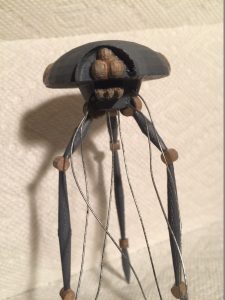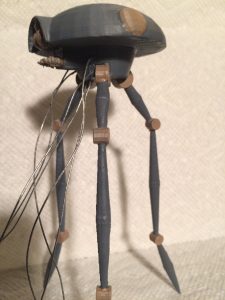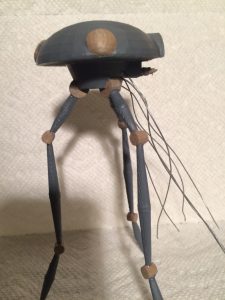![]() The major science fiction and fantasy convention in Baltimore turned fifty this year, and the organizers went all out. With George R. R. Martin as the Guest of Honor, and some seventeen previous GoH being there as well, this was a star-studded event.
The major science fiction and fantasy convention in Baltimore turned fifty this year, and the organizers went all out. With George R. R. Martin as the Guest of Honor, and some seventeen previous GoH being there as well, this was a star-studded event.
I’m told attendance more than doubled the usual number, and from the way folks crowded the Renaissance Baltimore Harborplace Hotel, I can believe it.
Nobody would describe this convention as a well-oiled machine that ran like clockwork. Still, what impressed me was the good attitude of the attendees. Most people accepted the chaos as a given; they went with the flow.
I shared a book-signing table with author Paul Cooley, an engaging and entertaining guy. One fan, a pregnant woman, asked him to sign a book she intended to give to “Jude.” When Paul asked who Jude was, she patted her bulge. He told me it was the first time he’d signed a book for someone who hadn’t been born yet.
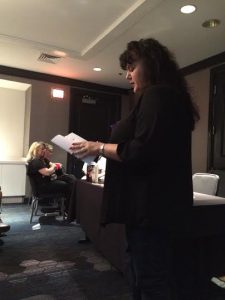
I managed to grab a pic of fellow author Kelly A. Harmon during the Broad Universe rapid-fire reading session. She captivated the room while reading from her latest novel, A Blue Collar Proposition, third in her Charm City Darkness series.
At a later reading session, I had the pleasure to join authors Ming Diaz (left), Michelle Sonnier (second from right), and Goldeen Ogawa (far right). Ming is a natural storyteller, with a melodious voice that mesmerizes. Both Michelle and Goldeen read from unpublished manuscripts of theirs—sections from novels in progress. (I’m not brave enough to do that.) I read from “After the Martians.”

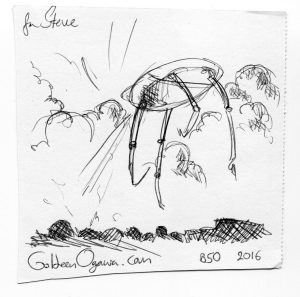
Goldeen Ogawa served as our moderator and kept things lively and fun. She’s a graphic designer as well as a writer, and creates her own book covers. While Ming, Michelle, and I were reading our selections, Goldeen drew little sketches based on what she saw in her artist’s mind while we spoke. The sketch she drew for me is a great rendering of a Martian tripod fighting machine battling in a desolate landscape. Thanks, Goldeen!
After every convention, I come away charged up and full of story ideas. I get a vivid reminder of the devotion of science fiction and fantasy fans, their hunger for good stories, and their willingness to learn about undiscovered authors. BALTICON 50 will be long remembered by—
Poseidon’s Scribe

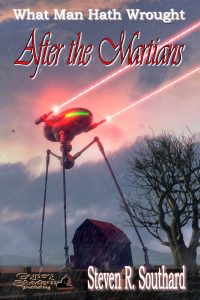
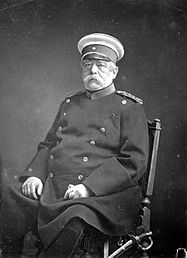
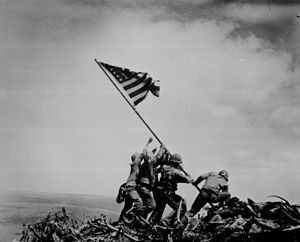 Regardless how that question is resolved, it’s a reminder of the influence certain images have on us.
Regardless how that question is resolved, it’s a reminder of the influence certain images have on us.